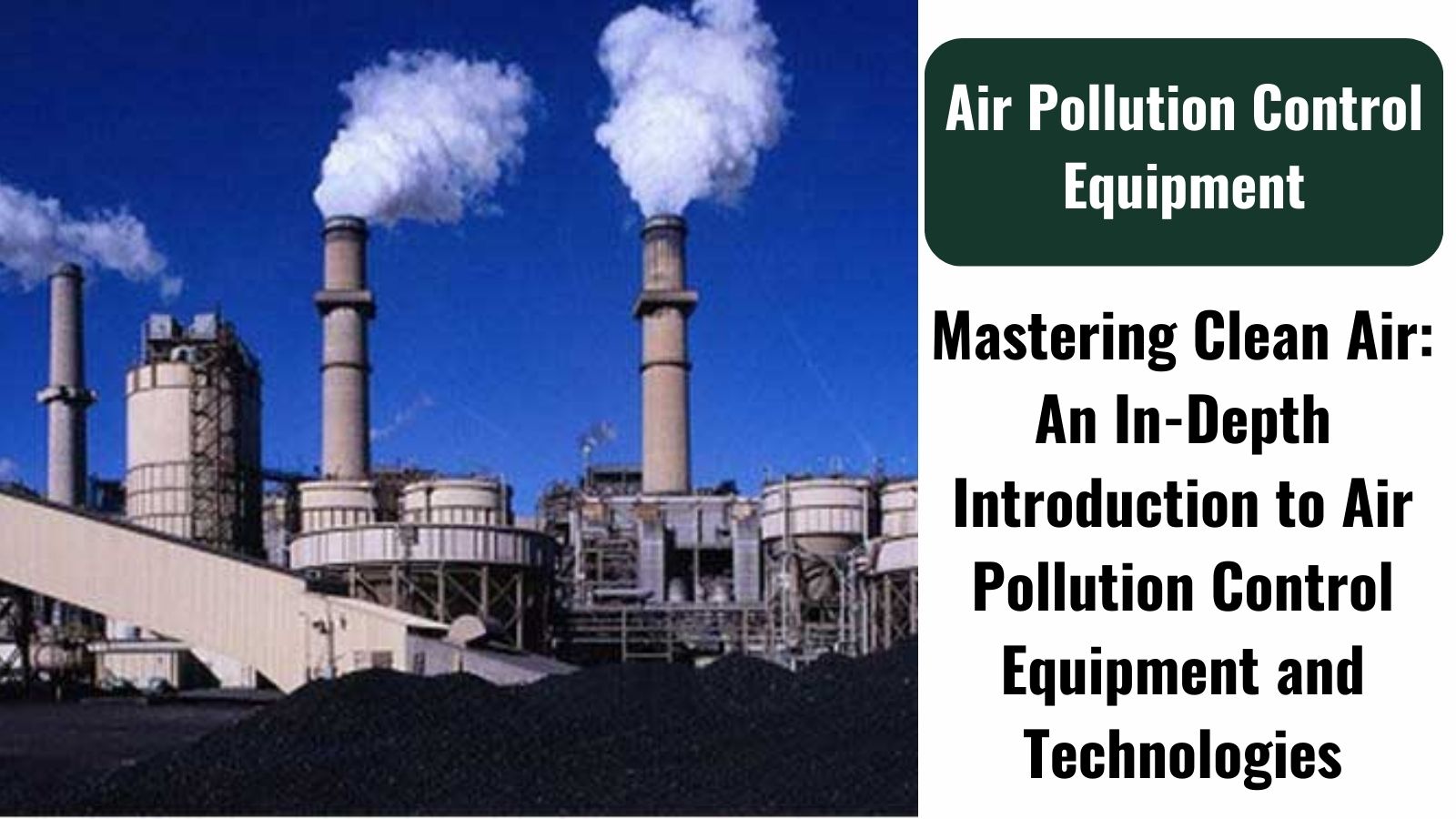
We'll look closely at air pollution control technology in this Blog.
You'll become knowledgeable about:
Systems that prevent various solid and gaseous pollutants from entering the atmosphere, mostly through industrial exhaust stacks (chimneys), are referred to as "air pollution control equipment. These restrictions fall into two groups: those that restrict the release of acidic gases and those that restrict the release of particulate debris.
Chemical modification is a process that turns a potentially harmful chemical into an inert one. Flue gas desulphurization is typically employed. Utilizing both non-catalytic reduction techniques and selective catalytic reduction, nitrogen oxide emissions from stationary transforming nitrogen oxides (NOx) into nitrogen molecules (N2). Technicians can apply catalytic oxidation, thermal oxidation, or biofiltration. Elimination of Hazards: The most common and basic approach of air cleaning is to remove airborne dangers. Although there are several ways to do this, air filter systems are usually employed.
It is essential to take into account the physical and chemical properties of the waste gas and pollution streams before making a decision.
The monitoring equipment must work with the system that it is intended to be used with; also, pay close attention to any applicable reporting requirements and any regulatory or permitting constraints. The equipment selected has an impact on the methods and locations of sample collection, processing, and disposal.
When choosing monitoring equipment, quality is the most crucial factor to take into account. Make sure the quality meets the requirements for quality control. Every piece of equipment requires upkeep. Ensure that the maintenance service is simple. The management and safety system must not be hindered by the monitoring. Purchasing the necessary monitoring equipment will be made ea sier by all of these factors.
Every industrial activity includes some sort of pollution control system to lower emissions of greenhouse gases (GHG), hazardous air pollutants (HAPs), and organic compounds (VOCs) in light of the growing concern for sustainability and pollution control. Such procedures must be put in place in order to comply with government control, certification requirements, and routine inspections.
Manufacturers of air pollution control equipment provide their clients a variety of options that are appropriate for the particular area and conditions in which their equipment will be deployed.
In order to remove particulate matter from the air, this air purification system filters or cools the airstream as it reaches the scrubber. The way that wet and dry air scrubbers eliminate particulates is different. The primary function of an air scrubber is to clean the air after it has been contaminated by dangerous gases, chemicals, fumes, and other pollutants.
While dry air scrubbers use solid materials to remove pollutants, wet air scrubbers use liquid solvents. Both remove gas pollutants and related smells from industrial exhaust streams. Compared to dry air scrubbers, wet air scrubbers frequently remove more airborne pollutants. They are necessary for industrial production or wastewater treatment facilities because they keep pollutants from contaminating the outside air. Any industry that generates air pollutants can employ wet air scrubbers, which are available in a variety of sizes and shapes.
In order to decrease and eliminate water-soluble pollutants from the air, these filters use microorganisms. Both bacteria and fungi are among the microorganisms used. Similar to incineration systems, biofilters remove contaminants to reduce their presence in industrial emissions and exhaust. On the other hand, the microbes in biofilters absorb and degrade gaseous pollutants including organic HAP and VOCs without releasing CO and NOx, which are typically produced during combustion. These devices can achieve an efficiency of above 98%.
Discover cutting-edge Air Pollution Control Equipment designed to mitigate environmental impact. From state-of-the-art filtration systems to advanced emission control solutions, explore a comprehensive range of technologies. Panse Consultants, with a nationwide presence in India, leads the way in providing expertise on implementing these solutions. Our all-India network ensures accessible and effective strategies for managing air quality, making a significant contribution to a cleaner and healthier environment